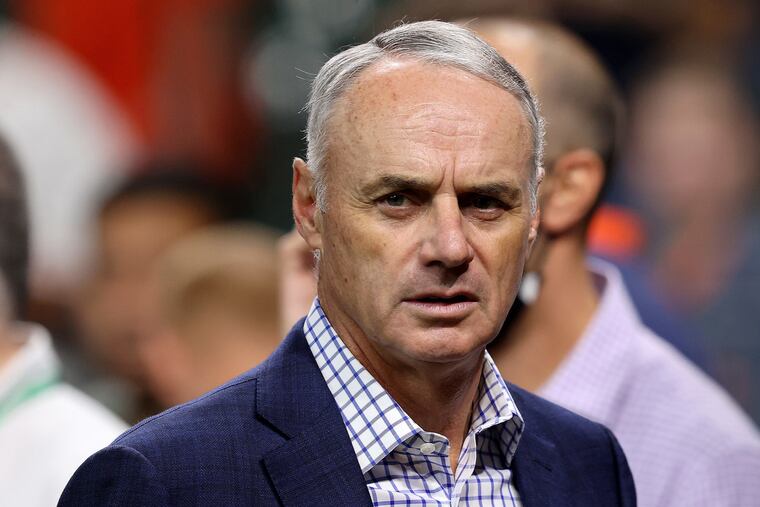MLB, players have ‘heated’ meeting; start of spring training likely to be delayed
Baseball could avoid a delay in the opening of camps by lifting the lockout and continuing to negotiate. The owners have not been willing to do that, sources said.

With two weeks until pitchers and catchers are due to report for spring training, officials from Major League Baseball and the MLB Players Association made little progress Tuesday in negotiations on a new collective bargaining agreement and emerged with even less optimism that camps will open on time.
The meeting, held at MLB headquarters in New York, lasted for approximately 90 minutes and was characterized as “heated,” according to a source familiar with the talks, with some players in attendance and others following along remotely via video getting “vocal” about the back-and-forth.
It was not immediately known when MLB and the players will meet again. Worth noting: MLB could avoid a delay in spring training by lifting the lockout that the owners directed commissioner Rob Manfred to enforce on Dec. 2 and continuing to negotiate. The owners have not yet shown a willingness to do that, sources said.
» READ MORE: Phillies’ Alec Bohm, and players like him, have already lost plenty because of MLB lockout
The players’ latest round of proposals reemphasized the gulf between the sides on most issues related to economics. For example, in its pursuit to raise salaries for younger players, the union agreed to reduce a pre-arbitration bonus pool to $100 million from previous proposals of $105 million and $120 million; MLB’s most recent proposal calls for a $10 million bonus pool.
In their other pitch Tuesday, the players agreed to reform a proposed system to avoid service-time manipulation. Rather than rewarding a year of service time to outfielders and pitchers who finish in the top 30 at their position in Wins Above Replacement and all other players who finish in the top 10, the thresholds were reduced to the top 20 and top seven, respectively.
But the players are said to be frustrated by the lack of discussion about two of the issues that mean the most to them: the competitive-balance tax and minimum salary. Those also happen to be issues in which the sides are especially far apart.
Before the lockout began, MLB agreed to bump the CBT threshold to $214 million, a $4 million increase from last season, while doubling the penalties for teams that exceed it. The players were seeking a $245 million threshold.
The players’ union, mindful that more than half of its constituency has zero to three years of major-league service time, is seeking an increase in the minimum salary to $775,000. MLB’s latest proposal calls for a $615,000 minimum with limits on teams that may want to pay pre-arbitration players as a good-faith gesture based on performance.
Tuesday marked the sides’ third in-person meeting — and their fourth session overall — on core economic issues since the lockout began two months ago. At the time, Manfred described the lockout as a “defensive” measure to spur negotiations, but the sides didn’t talk again about economics for 42 days.
Manfred said in December that the league was also hoping to avoid a repeat of 1994, when the season began amid an expired collective bargaining agreement and the players went on strike in August and caused a cancellation of the playoffs, a time of significant revenue for the owners.